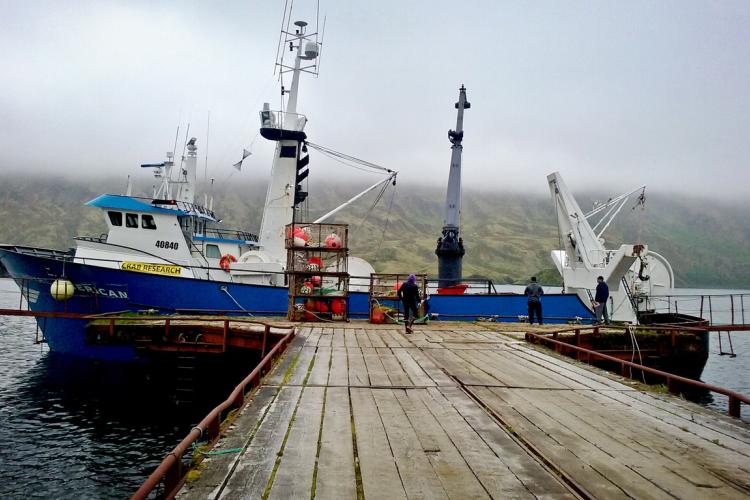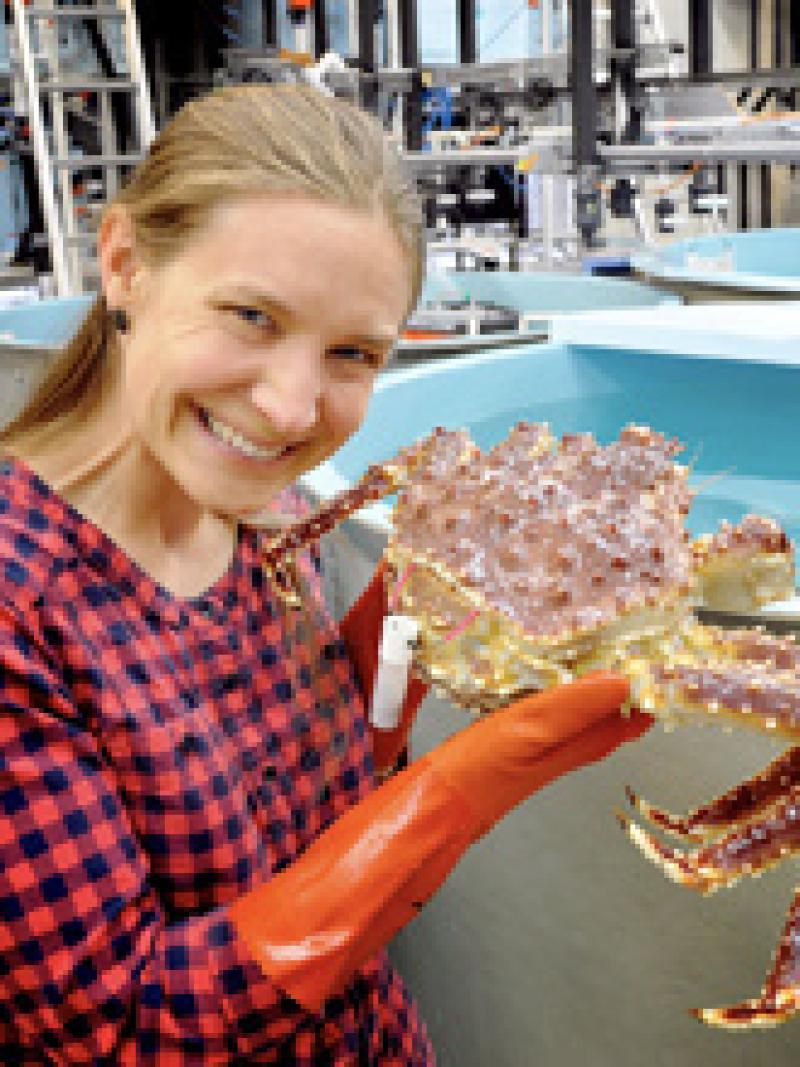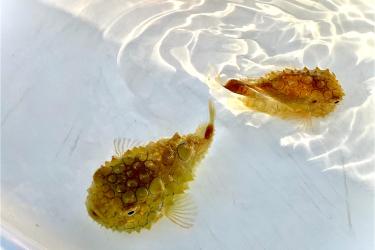
Lupines along the road in Dutch Harbor.
After an exciting month at sea, it sure was nice to step on shore in Dutch Harbor. I definitely missed being able to go on a real walk, not just small circles around the deck! Our timing was also perfect, the wildflowers were a mass of brilliant colors on the hillsides, such a beautiful site!
Now that I’m back in our Kodiak lab, the waiting game starts...what are the tagged crabs up to now and where are they going? Wouldn’t it be nice if I could just give them a call and ask how they are doing? But no, we have to wait until October. Until then, I am working on all the logistics for sending out the Saildrone.

Dutch Harbor from the top of Bunker Hill.
For example, we have to decide what the uncrewed surface vehicle's “search pattern” will look like and the best way to attach the receiver to the drone so that it can pick up the tag signals. It's an important time to be conducting this research because the Bristol Bay red king crab population has been declining and last year there was barely enough crab to open the fishery.
Understanding crab movement throughout the seasons will help us do the best job possible managing this important species, as many changes occur in the Bering Sea, regarding water temperature, even on the seafloor where the crab lives. We aren’t sure how the king crabs will react to this rise in temperature. Will the crabs move north? Will they cluster in pockets of cooler water? Will they move into areas where they are at risk to being caught in trawl fisheries? There are so many questions we are working hard to finding the answers to, for this majestic and tasty crab.
I’ll be flying out to Dutch Harbor at the end of September to help launch the Saildrone. I’ll write updates then to let you know what it’s like to re-find crab with a drone!



